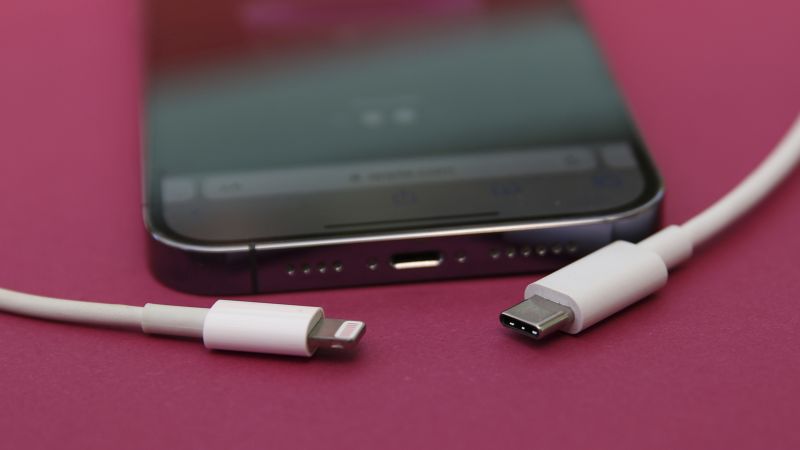Editor’s Note: A version of this story appeared in CNN Business’ Nightcap newsletter. To get it in your inbox, sign up for free, here.
At long last, Apple is killing its proprietary Lightning port in the iPhone 15 and embracing a charging cable that’s compatible with non-Apple products. That’s one less extra cord cluttering your nightstand. One less thing to forget when packing for a weekend getaway.
But the move, hastened by a European regulatory mandate passed last year, is a largely symbolic measure that comes years after most other gadgets switched to USB-C. And it won’t do much to shrink the mountains of e-waste piling up around the globe.
“I would classify the EU law and Apple as an evolution, not a revolution,” says Marian Chertow, a professor of industrial environmental management at the Yale School of the Environment.
When the European Commission passed the directive last year, it cited two motivations: First, everyone agrees that it’s super annoying to have so many cables lying around. Second, having a common charger across devices — whether they’re made by Apple or Samsung or Garmin or whoever — would “significantly reduce electronic waste.”
Apple initially pushed back, of course, partly because selling extra Lightning cables made it lots of money. But it also said the waste argument was misguided, and that the promise of wireless charging would make the cable issue moot. (Still, the company ultimately said it would comply with the common cable rules.)
Retiring the Lightning cable could even generate, in the short term, a surge of e-waste as iPhone users toss their useless Lightning cables in a drawer. (Which, to be clear, isn’t recommended. Apple says it has a “robust” recycling program where you can bring in used chargers and cables. You can also look for a local e-waste recycling center or Best Buy store for environmentally friendly options.)
Big-picture, though, the impact on the mountains of global e-waste will likely be minimal.
There are about 66 million tons of electronic waste generated each year, says Ruediger Kuehr, head of the United Nations University’s Sustainable Cycles Program. Charging cables, he said account for “a few hundred thousand tons.”
“When we look to the pure numbers, it’s close to nothing,” Kuehr said. “But we nevertheless think it’s a very important step in order to make people … aware of the issue we are facing.”
E-waste is a growing problem that has yet to enter the mainstream consciousness. Most of it ends up where it shouldn’t — in our closets and junk drawers — which means more materials such as copper, gold and platinum have to be mined to produce new products.
“You can make money out of it, but you have to really do a lot of steps,” Kuehr says. “This is not understandable for the consumer in comparison to all the other waste streams.”
Nearly 80% of all e-waste generated around the globe is not properly treated, he said.
Whether the EU rule actually reduces waste is beside the point if it can push Apple and other manufacturers to help close the loop by making it easier to refurbish and recycle old products.
And to Apple’s credit, the company has been “a leader in scraping off rare earth metals from its reuse pile to recover these expensive materials,” Chertow says, noting that last year Apple said it was reusing more than two-thirds of the aluminum it needed. “These days, waste experts find that “reuse” is most often a better path than recycling as more can be recovered.”
—CNN’s Samantha Murphy Kelly contributed to this article.
Enjoying Nightcap? Sign up and you’ll get all of this, plus some other funny stuff we liked on the internet, in your inbox every night. (OK, most nights — we believe in a four-day work week around here.)
Read the full article here










